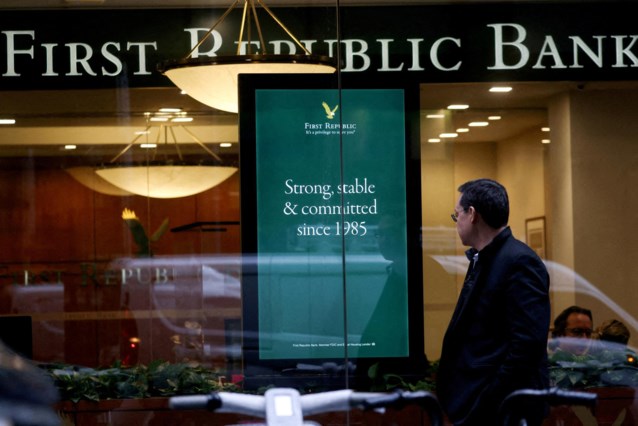Another bank in distress in the US. The sharply increased interest rates push the First Republic Bank towards the abyss, and there is little hope that it can be saved. According to analysts, it is not the last regional bank in the US that is in danger of disappearing, and fortunately the impact on banks in Europe seems to be limited.
These days you still don’t have to look at the economics pages of American newspapers for cheers. Inflation remains very high, and after California’s Silicon Valley Bank and New York’s Signature Bank went bankrupt due to a ‘bank run’ – customers withdrawing their money en masse out of fear – First Republic Bank from San Francisco is now also involved in bad papers.
The share of the bank, which lured a wealthy clientele with very cheap loans on the condition that they also put their savings in an account, has plummeted in recent days. On Tuesday, the value of the share halved, on Wednesday it fell another 30 percent. From the $147 per share at which the bank’s shares peaked in February, only $5.69 now remains. All because of the rising interest rates and the wealthy customers who took their money away to invest it elsewhere. In response, the bank has already borrowed more than a hundred billion euros and layoffs were announced and investments were reduced.
The fact that another bank is in trouble is causing further concern within the banking sector and within the US government. One solution could be for a major bank to buy up First Republic – as Credit Suisse was previously saved from collapse – but US analysts don’t think it’s likely to happen. “The losses are just too great,” says a source The Washington Post. The government also does not seem inclined to save First Republic. No one seems to know how to proceed.
The banking crisis therefore continues, although it is still small compared to that of 2008. “But it is quite possible that some of those regional banks in the US will disappear,” says Veronique Goossens, chief economist of Belfius. “There is great uncertainty and many savers withdraw their money.” That is also what American analysts predict. Moreover, the regulations for those regional banks, unlike the banks in Europe or large American banks such as Bank of America, have become much more flexible since the reforms under Donald Trump. “They don’t have to pass the same stress tests, which will have made them extra vulnerable,” says Peter Vanden Houte, chief economist at ING.
The banking crisis therefore seems to remain an American story. The newspaper Wall Street Journal wrote earlier this week that savings rates in Europe could possibly rise as a result of the uncertainty, but both chief economists do not see that happening. The situation is too different, they both say. “Much more money is circulated in Europe than in the US,” says Vanden Houte. “Many people take their money there and put it in money market funds, which fall outside the banking sector. As a result, less money is with the banks and they are more stressed. Those funds do not exist in Europe.”
